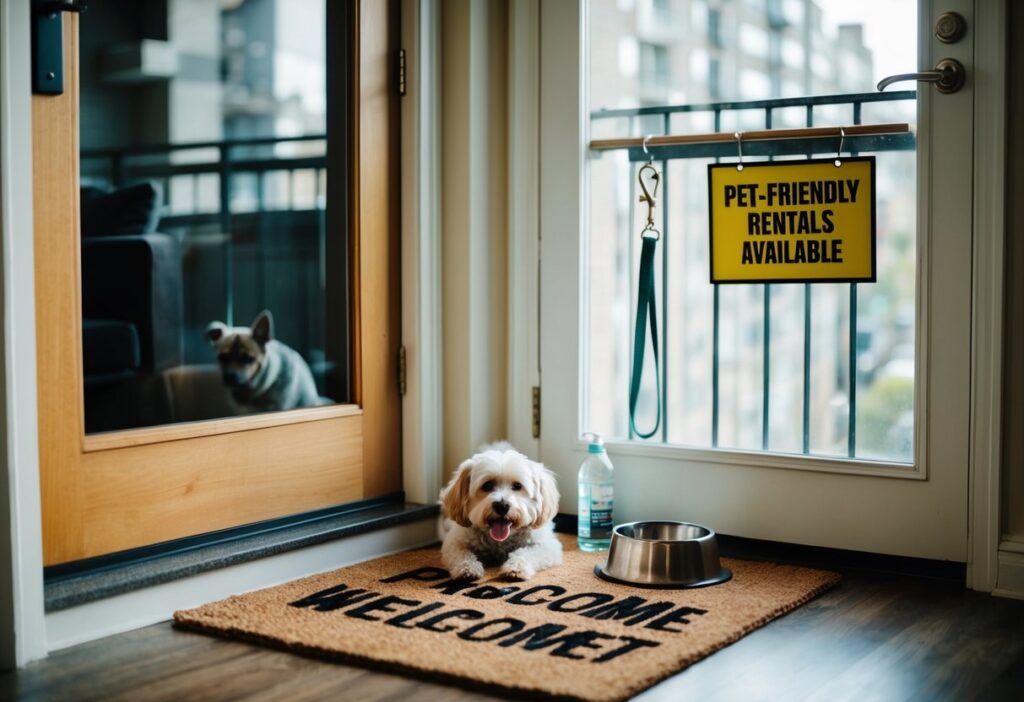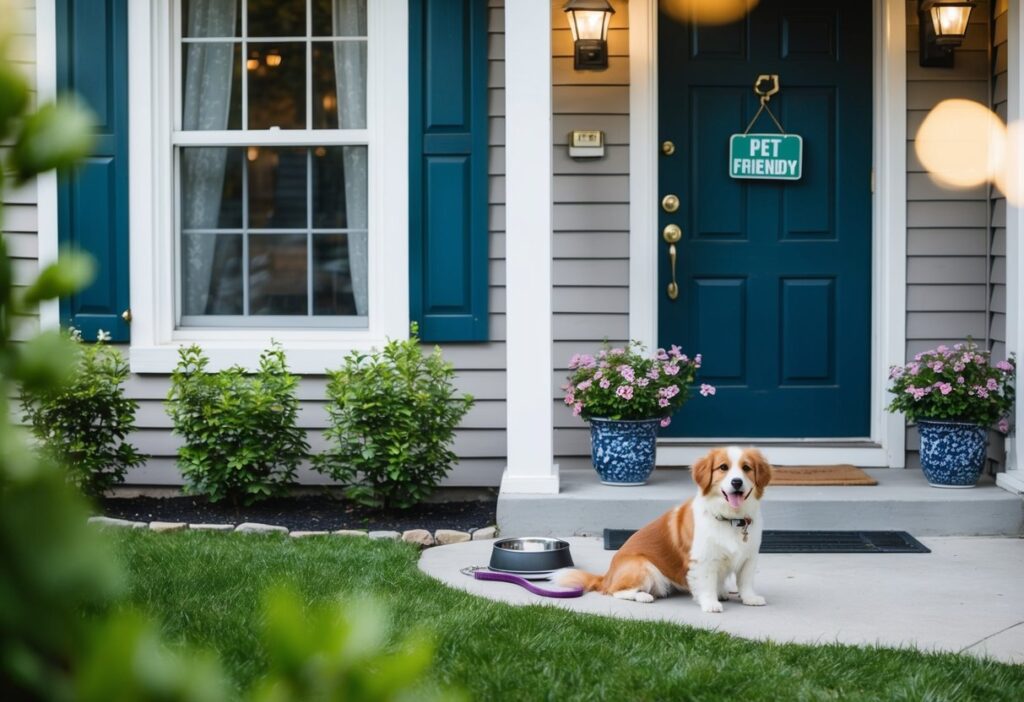Anúncios
Looking for a pet-friendly rental that won’t drain your savings? It’s a common challenge many pet owners face in today’s competitive housing market.
While landlords often charge extra fees or simply refuse pets altogether, there are strategies to find affordable options.

The key to finding budget-friendly, pet-welcoming rentals lies in timing your search right, negotiating effectively, and exploring neighborhoods just outside popular areas where prices drop significantly but pet policies remain flexible.
These areas often offer similar amenities at lower costs, making them ideal for pet owners on a budget.
Pet ownership shouldn’t mean paying premium prices for housing. With some research and the right approach, you can find a comfortable home that welcomes both you and your furry family members without stretching your finances to the breaking point.
Understanding the Pet-Friendly Rental Market

Finding a rental that allows pets involves navigating a complex market with specific challenges. Pet owners face varying restrictions, higher costs, and location-based differences that can impact both availability and affordability.
Demand for Pet-Friendly Rentals
The market for pet-friendly rentals has grown substantially in recent years. Approximately 67% of American households own pets, but only about 55% of rental properties accept them. This imbalance creates high competition for available units.
Pet owners often face a “pet premium” in the rental market. This can manifest as higher security deposits, monthly pet rent fees ranging from $25-50 per pet, or higher base rent overall.
Property managers have recognized this demand trend. More buildings now advertise pet amenities like dog washing stations, walking areas, or pet-sitting services to attract this large segment of renters.
The limited supply of pet-friendly housing means renters with animals typically spend 20-30% more time searching for appropriate accommodations compared to those without pets.
Common Restrictions and Requirements
Most pet-friendly properties maintain specific policies that renters must understand before applying. These frequently include:
- Size and weight limits: Many properties restrict dogs over 25-50 pounds
- Breed restrictions: Certain breeds like pit bulls, German shepherds, or rottweilers are commonly prohibited
- Number limitations: Often capped at 1-2 pets per unit
- Pet interviews or meet-and-greets: Some landlords request meeting pets before approval
Documentation requirements typically include:
- Vaccination records
- Proof of licensing
- Renter’s insurance with pet coverage
- References from previous landlords regarding pet behavior
These restrictions help property managers reduce perceived risks, but they create additional hurdles for pet owners seeking affordable housing options.
The Impact of Location on Availability
Pet-friendly rental availability varies significantly by location. Urban areas generally offer more pet-friendly apartments, but often with stricter limitations and higher fees.
Suburban and rural locations may have fewer total rental options but higher acceptance rates for pets. These areas typically allow larger pets and have fewer restrictions on breeds or numbers.
Some cities have pet-friendly reputations. Places like Portland, Seattle, and Austin consistently rank high for pet accommodation in rental markets.
Local laws and regulations impact availability too. Some municipalities have enacted “pet-friendly housing” ordinances that prevent blanket pet bans, though they still allow reasonable restrictions and fees.
Research indicates neighborhoods with more parks, trails, and outdoor spaces tend to have higher concentrations of pet-friendly rentals to accommodate the lifestyle needs of pet owners.
Strategies for Finding Affordable Pet-Friendly Rentals

Finding budget-friendly housing that welcomes pets requires specific approaches and tools. Renters can leverage technology, personal connections, and negotiation skills to secure the right place.
Online Rental Platforms and Apps
Several websites and apps now offer pet-friendly filtering options. Platforms like Zillow, Apartments.com, and Trulia let users search specifically for pet-friendly properties within their budget range.
The newer app PadMapper includes a “pet-friendly” filter that shows rentals accepting dogs, cats, or both. Some platforms even display pet deposit amounts and weight restrictions upfront.
Facebook Marketplace and Craigslist often list independent landlords who may be more flexible about pets than large property management companies.
Useful search filters to use:
- Pet-friendly (specify dog/cat)
- Maximum rent price
- Location/neighborhood
- Size requirements
Networking and Community Resources
Local pet owner groups can be valuable resources for finding affordable housing. Many cities have Facebook groups specifically for pet owners seeking rentals, where members share leads on pet-friendly landlords.
Visiting dog parks provides opportunities to ask other pet owners about their housing experiences. These casual conversations often reveal landlords who welcome pets without charging excessive fees.
Local animal shelters and veterinarians frequently maintain lists of pet-friendly housing options. They interact with pet owners daily and may know which apartment complexes or property managers are truly pet-friendly.
Neighborhood bulletin boards and community centers sometimes post rental opportunities not advertised online.
Negotiation Techniques for Lowering Rent
Offering a larger security deposit can reassure landlords concerned about pet damage. This additional amount, typically 25-50% above the standard deposit, often proves more economical than monthly pet rent.
Sample negotiation offers:
- Providing pet references from previous landlords
- Offering to pay for professional cleaning upon move-out
- Suggesting a trial period with periodic property inspections
Pet resumes highlight a pet’s positive qualities, including training certificates, vaccination records, and references from previous landlords or neighbors. These documents demonstrate responsible ownership.
Timing negotiations strategically helps. Properties vacant for over 30 days or with move-in dates during winter months often have more flexible terms.
Financial Considerations

Finding pet-friendly housing involves more than just the monthly rent. You’ll need to plan for several expenses related to your pet’s presence in a rental property. Understanding these costs ahead of time can help you create a realistic budget and avoid financial surprises.
Calculating Total Costs
Monthly rent for pet-friendly apartments often runs 20-30% higher than similar properties that don’t allow pets. This premium varies by location, with urban areas typically charging more. When comparing options, focus on total monthly costs rather than just the base rent.
Create a spreadsheet to track expenses for each potential rental:
- Base rent
- Pet rent ($25-$50 per month per pet)
- Utilities (some properties charge extra for pets)
- Proximity to pet services (consider transportation costs)
Remember that cheaper rentals in remote locations might increase your transportation costs to vet appointments or pet supply stores. A slightly higher rent in a pet-friendly neighborhood could save money in the long run.
Pet Deposits and Additional Fees
Most landlords require a pet deposit to cover potential damages. These deposits typically range from $200-$500 per pet, depending on size and breed. Unlike regular security deposits, pet deposits may be partially or fully non-refundable.
Common pet fees include:
- One-time pet fee ($100-$300)
- Refundable pet deposit ($200-$500)
- Non-refundable pet fee ($100-$300)
- Monthly pet rent ($10-$50)
Always get fee structures in writing before signing a lease. Some landlords may be willing to negotiate terms, especially if your pet has references from previous landlords or training certificates.
Ask if the landlord offers any deposit reduction for pets with certification or training. Some insurance policies can also cover pet damages, potentially reducing your upfront costs.
Budgeting for Pet Needs
Beyond housing costs, your pet’s ongoing needs must fit into your budget. The average pet owner spends $500-$1,000 annually on basic necessities.
Essential monthly pet expenses:
| Expense | Monthly Cost |
|---|---|
| Food | $20-$60 |
| Regular medications | $10-$30 |
| Toys/treats | $10-$20 |
| Grooming | $0-$50 |
| Emergency fund | $15-$30 |
Set aside money for unexpected veterinary costs. Consider pet insurance, which typically costs $30-$50 monthly but can save thousands during emergencies.
Look for pet-friendly amenities that reduce other costs. On-site dog runs or washing stations can save on dog walker fees or grooming costs. Some apartment complexes even offer discounted vet services or free pet sitting.